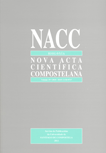Estudio del género Cladonia (Lecanorales, Ascomycota) al suroeste de Galicia (Pontevedra, SW España) Cladonia en O Rosal
Contenido principal del artículo
Resumen
Palabras clave:
Detalles del artículo
Referencias
AHTI, T. & STENROOs, S. (2013). Cladoniaceae. In: Ahti, T., Stenroos, S. & Moberg, R. (Eds.), Nordic Lichen Flora, vol. 5. Uddevalla, Uppsala.
BURGAZ, A.R. (2015). Asientos de flora liquenológica ibérica: Cladoniaceae. Clementeana. 16: 3–158.
BURGAZ, A.R. & ATHI, T. (2009). Cladoniaceae. Flora Liquenológica Ibérica, vol. 4. Sociedad Española de Liquenología, Madrid.
BURGAZ, A.R., AHTI, T. & PINO-BODAS, R. (2020). Mediterranean Cladoniaceae. Sociedad Española de Liquenología (SEL), Madrid.
CLAUZADE, G. & ROUX, C. (1985). Likenoj de Okcidenta Eŭropo. Bull. Soc. Bot. Centre-Ouest 7: 1–893.
CRESPO-PARDO, E. (2016). Actualización del checklist de líquenes y hongos liquenícolas de Galicia. Trabajo Fin de Grado. UVIGO.
FERNÁNDEZ-COSTAS, D. & GARCÍA-MOLARES, A. (2023). Algunos líquenes interesantes para la Península Ibérica. Botanica Complutensis. 47: e85069. doi: 10.5209/bocm.85069
FONTAINE, K.M., AHTI, T. & PIERCEY-NORMORE, M.D. (2010). Convergent evolution in Cladonia gracilis and allies. The Lichenologist. 42: 323–338.
GBIF. (2022). Global biodiversity information facility. Sitio web: https://www.gbif.org/es/
GUITIÁN, M.R. & RAMIL, P.R. (2007). Clasificaciones climáticas aplicadas a Galicia: revisión desde una perspectiva biogeográfica. Recursos Rurais. 1(4): 19–50.
LLIMONA, X. & HLADUN, N.L. (2001). Checklist of the lichens and lichenicolous fungi of the Iberian Peninsula and Balearic Islands. Bocconea 14: 1–581.
ORANGE, A., JAMES, P.W. & WHITE, F.J. (2001). Microchemical methods for the identification of lichens. British Lichen Society, London.
PINO-BODAS, R., MARTÍN, M.P. & BURGAZ, A.R. (2010). Insight into the Cladonia convoluta – C. foliacea (Cladoniaceae, Ascomycota) complex and related species, revealed through morphological, biochemical and phylogenetic analyses. Systematics and Biodiversity. 8: 575–586. doi: 10.1080/14772000.2010.532834
PINO-BODAS, R., MARTÍN, M.P., BURGAZ, A.R. & LUMBSCH, H.T. (2012). Phenotypical plasticity and homoplasy complicate species delimitation in the Cladonia gracilis group (Cladoniaceae, Ascomycota). Organisms Diversity & Evolution. 11: 343–355. doi: 10.1007/s13127-011-0062-2
PINO-BODAS, R., PÉREZ-VARGAS, I., STENROOS, S., AHTI, T. & BURGAZ, A.R. (2016). Sharpening the species boundaries in the Cladonia mediterranea complex (Cladoniaceae, Ascomycota). Persoonia 37: 1–12. doi: 10.3767/003158516X688081
PINO-BODAS, R., SANDERSON, N., CANNON, P., APTROOT, A., COPPINS, B., ORANGE, A. & SIMKIN, J. (2021). Lecanorales: Cladoniaceae [revision 1], including the genera Cladonia, Pilophorus and Pycnothelia. Revisions of British and Irish Lichens 26: 1–45.
REES, M., GODLEE, J. L., HARRIS, D. J., RYAN, C. M., & DEXTER, K. G. (2023). Testing White’s Floristic Impoverishment Hypothesis in the Forest-Savanna Transition Zones of Africa. Diversity 15(7): 833.
RODRÍGUEZ-GARCÍA, A. (2004) Mapa geomorfológico de España. Escala 1:50.000. Hojas nº298–299 (La Guardia-Tomiño). Instituto Geológico y Minero de España. Madrid.
SCHUMM, F. & ELIX, J.A. (2016). Atlas of images of thin layer chromatograms of lichen substances. Supplement. Books on Demand GmbH. Norderstedt.
SMITH, C.W., APTROOT, A., COPPINS, B.J., FLETCHER, A., GILBERT, O.L., JAMES, P.W. & WOSELEY, P.A. (2009). The lichens of Great Britain and Ireland. British Lichen Society, London.
STEINOVÁ, J., STENROOS, S., GRUBE, M. & SKALOUD, P. (2013). Genetic diversity and species delimitation of the zeorin-containing red-fruited Cladonia species (lichenized Ascomycota) assessed with ITS rDNA and β-tubulin data. The Lichenologist. 45(5): 665–684. https://doi.org/10.1017/S0024282913000297
STENROOS, S., HYVÖNEN, J., MYLLYS, L., THELL, A. & AHTI, T. (2002). Phylogeny of the genus Cladonia s.l. (Cladoniaceae, Ascomycetes) inferred from molecular, morphological, and chemical data. Cladistics. 18: 237–278. doi: 10.1111/j.1096-0031.2002.tb00151.x
STENROOS, S., PINO-BODAS, R., HYVÖONEN, J., LUMBSCH, H.T. & AHTI, T. (2019). Phylogeny of the family Cladoniaceae (Lecanoromycetes, Ascomycota) based on sequences of multiple loci. Cladistics 35: 351-384. doi:10.1111/cla.12363
TEXIDOR, J. (1869). Apuntes para la Flora de España, ó Lista de plantas no citadas y raras en Galicia, partido judicial de Valladolid, provincia de Madrid y Cataluña. vol. 18. Imprenta de la viuda Aguado e hijos, Madrid.
VALCÁRCEL, C.P., LÓPEZ DE SILANES VÁZQUEZ, M., & CARBALLAL, R. (1991). Los géneros Cladina y Cladonia (Lecanorales) en el municipio de A Fonsagrada (Lugo). Nova Acta Cientifica Compostelana. 2: 13–21.
WHITE, F.J. & JAMES, P.W. (1985). A new guide to microchemical techniques for the identification of lichen substances. British Lichen Society Bulletin 57 (suppl): 1–41.







